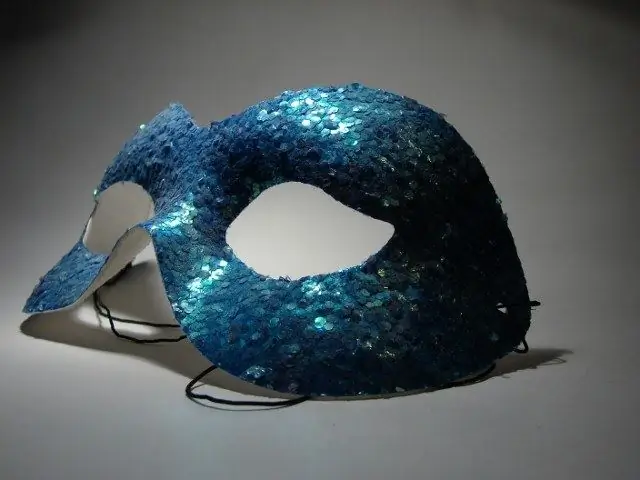Zorro's costume is one of the most common at parties and masquerades. To make the outfit look authentic, you will need to cut out a fabric mask that wraps around half of your head. If the approximate similarity with the original is enough for you, you can make a papier-mâché mask.

Instructions
Step 1
Choose a fabric for your mask. It should be very flexible, but still breathable. To determine the size of the cut, take measurements from the head and build a pattern.
Step 2
Place the end of the measuring tape in the middle of the nose and pass it up through the bridge of the nose, center of the forehead, crown back, to the level of the base of the skull. Draw a piece of the same length on the pattern paper. This is the short side of the rectangle. Draw 1 m perpendiculars from both ends. If the bandage is too long, it can be cut off during fitting.
Step 3
Measure 50 cm along the largest side of the shape. At this level, divide the rectangle in two. From the end of this segment, set aside the distance from the middle of the nose to the bridge of the nose. Draw a perpendicular. At this level, draw the holes for the eyes.
Step 4
Transfer the pattern to the fabric and cut out the blank for the mask. If the edges of the fabric are fraying, sew the fabric around the eyes and around the perimeter.
Step 5
Try on a mask. Align the holes, place the fabric over the forehead and smooth towards the back of the head. Then pull the sides of the mask parallel to the floor line and tie them in a knot at the back of the neck. Adjust the tension of the fabric so that the fabric does not hide the shape of the face, but does not squeeze it too much.
Step 6
Approximately the same mask can be made from papier-mâché. It will only cover the face. From the sculpted plasticine, make an impression of the face from the eyebrows to the middle of the nose. Put 5 layers of small pieces of paper on it, smearing every second layer with glue. When the mask is dry (after 2-3 days), smooth its surface. You can sand it with fine sandpaper or cover it with an even layer of paper-glue. If you skip this stage of preparation, all the flaws will be noticeable under the layer of glossy paint.
Step 7
Paint the mask with black acrylic or cover with a piece of black velvet. Punch holes on the sides for an elastic band or black satin ribbon.






